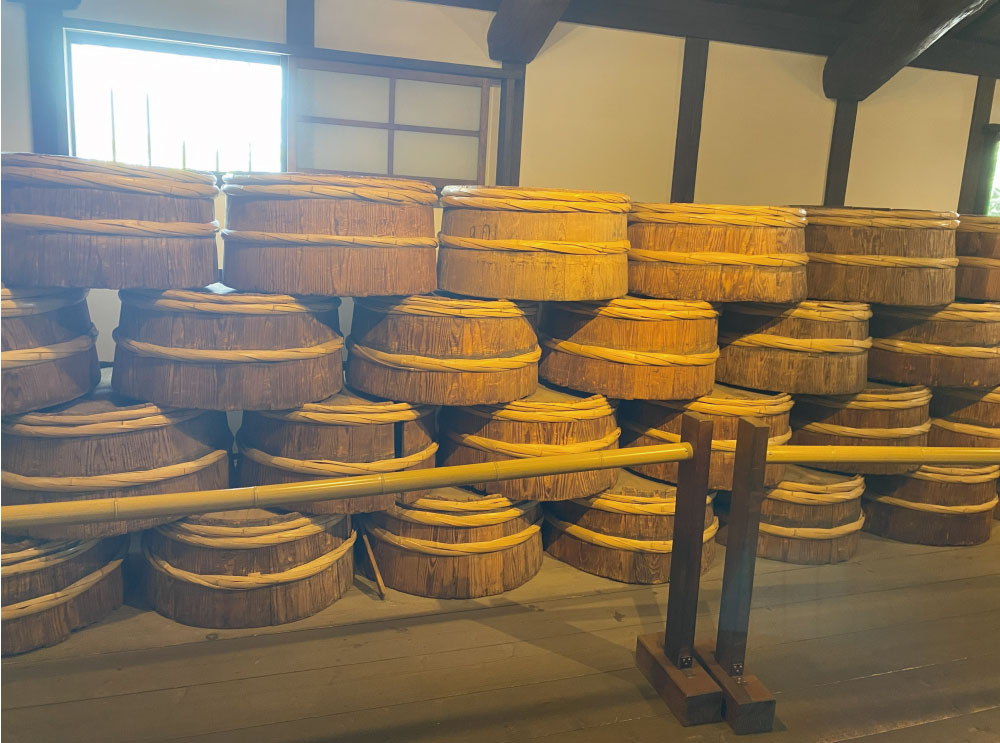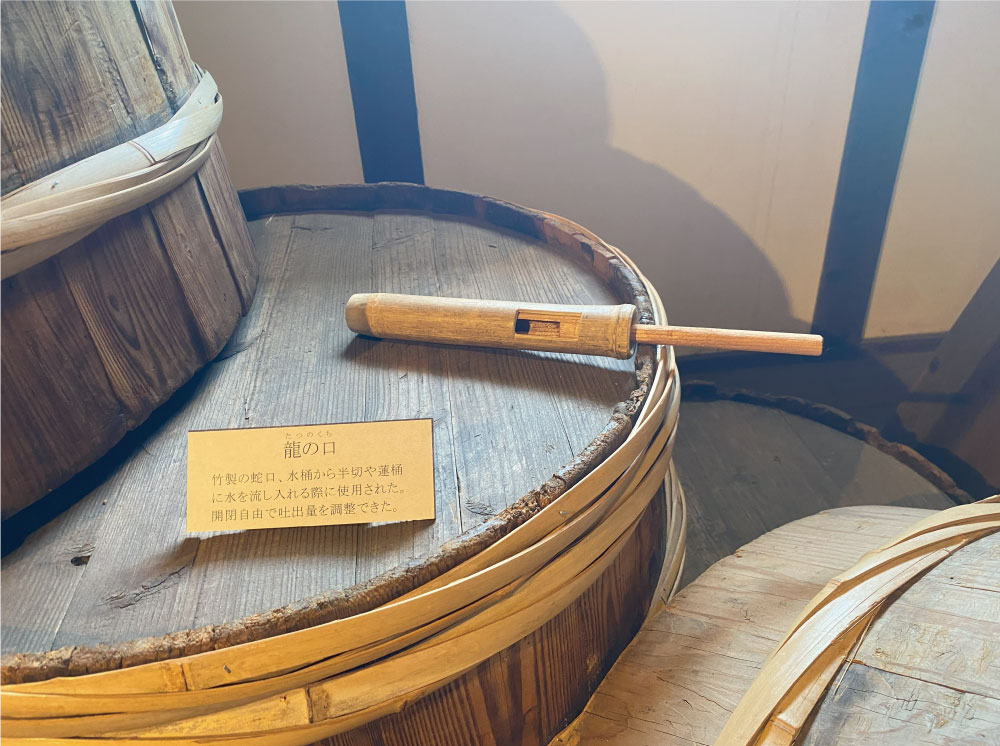Moto (yeast starter)
Moto literally means “the origin of sake” in Japanese script. It is the first step in which fermentation takes place.
To make the moto, a certain amount of steamed rice, koji and water are put into a shallow tub and mixed with an oar-like tool (kai). This process is called kai-ire. The process is carried out two to three times per day for about 20 minutes, while singing traditional sake-brewing songs. During this procedure, yeast living in the air of the building falls in and begins fermentation.
Tools on Display
Hangiri-oke (Hangiri)

A handy tub called hangiri or "half-cut" because its shape is that of a tub cut in half. Each hangiri has a name for its own specific purpose.
Moto-hangiri

Used in producing yeast starter
Sen-hangiri

Used in washing small utensils
Do-hangiri (Zatsu-hangiri)
Used in washing miscellaneous items, such as rags
Moto-suri (Yeast Starter Grinding)

The process of grinding the yeast starter (shubo) in a hangiri tub, first in groups of 3, then in pairs. In order to stir with a paddle to evenly mix the ingredients as well as to set working hours, unique moto-suri songs were sung in different regions.
Tatsu no Kuchi (Dragon's Mouth)

A bamboo faucet used to pour water from a water tub into a hangiri or hasu tub. The amount of flow could be adjusted by freely opening or closing the faucet.
Dakidaru (Warming Cask)

A cedar cask filled with hot water, stoppered, and placed in the yeast starter (shubo) to heat it.
